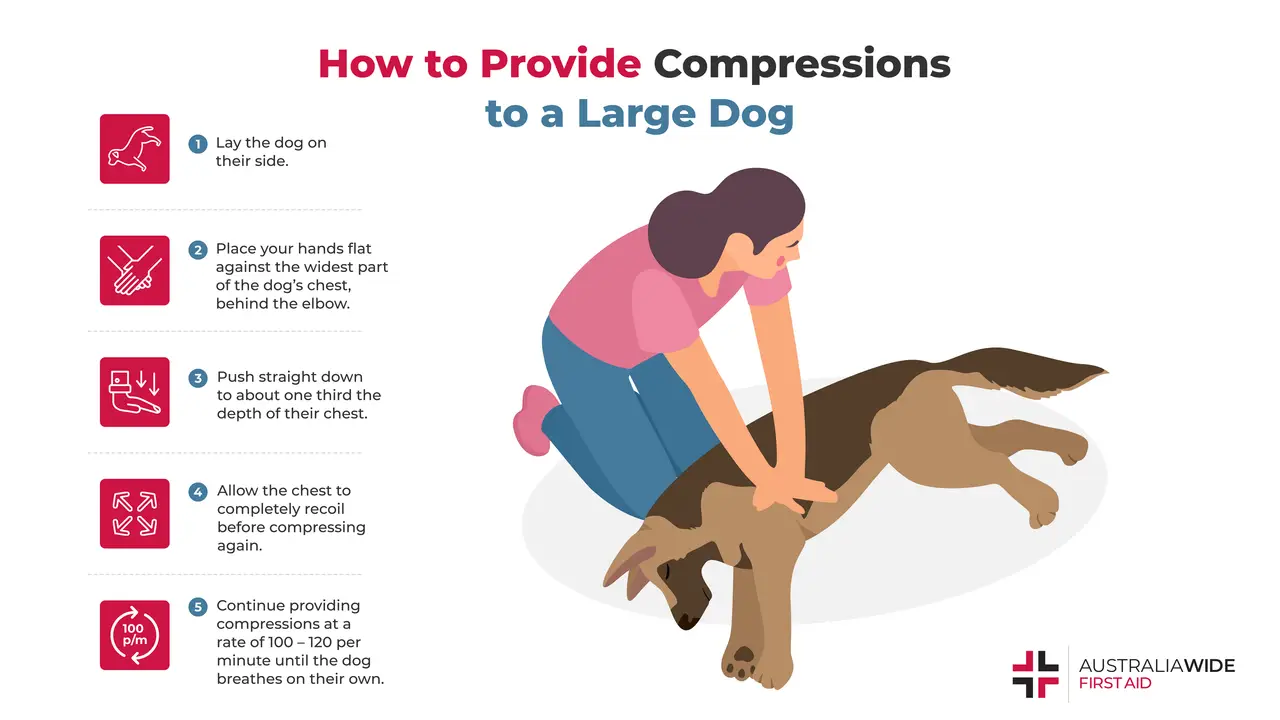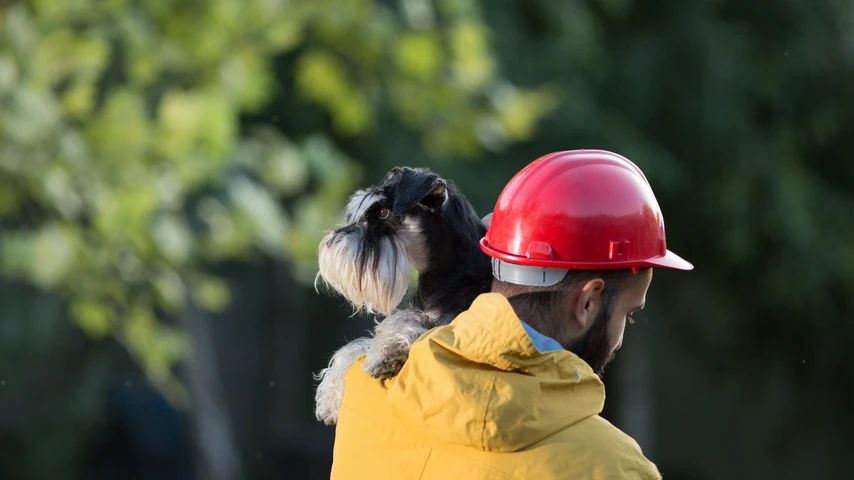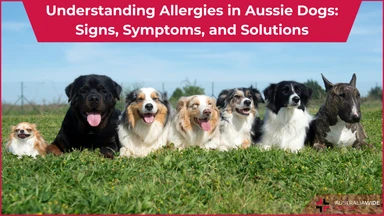Pet First Aid: CPR for Dogs


CPR stands for cardiopulmonary resuscitation. Providing CPR to a dog who is not breathing or is pulseless can restore blood flow and save his life.
CPR efforts on animals have been documented since the late 1800s. While the techniques have changed over the years, the goal remains the same – to restore or maintain blood flow to vital organs in the absence of a heartbeat, or to oxygenate the lungs.
CPR stands for cardiopulmonary resuscitation. The purpose is to maintain the flow of blood to vital organs and oxygenate the lungs. This is achieved using compressions and rescue breaths. Compressions are a way to manually push blood out of the chambers of the heart and then allow the heart to refill with blood.
With compressions, you are manually pumping the heart. Rescue breaths are a way to transfer oxygen from one person to another: or in this case, from one person to a dog. When providing rescue breaths, you should see the chest rise and fall as the lungs fill with air.
Evidence suggests that compressions are more important than rescue breaths. For that reason, if you encounter a dog that needs CPR, start with compressions first. And if you are uncomfortable with or unable to perform rescue breaths, it is acceptable to only complete compressions and to skip rescue breaths.
A dog needs CPR when he:
If the dog is experiencing both: begin CPR, starting with compressions.
If the dog has a pulse but is not breathing, assess the airway. It is possible that the dog is choking on something, so check the mouth and throat first before providing rescue breaths.
CPR should be initiated as quickly as possible. The longer a dog goes without proper blood flow to his vital organs, the greater the chance of death.

Place hand on the chest behind the left elbow. If you feel nothing after 3-5 seconds, begin CPR.
If you feel a heartbeat but it feels slow or very soft, count the beats for 1 full minute or count the beats for 10 seconds and multiply by 6. An ideal heart rate is between 80-100 at rest.
If you notice the heartbeat stops, begin CPR.
Large Dogs:
Lay the dog on his side.
Place one hand flat on the widest part of the chest behind the elbow. Stack your other hand on top and interlace your fingers.
Push straight into the chest at a depth of 1-3” depending on the size of the dog, or 1/3 width of the chest. Allow the chest to completely recoil before compressing again as this allows the chambers of the heart to refill with blood.
Small Dogs:
Lay the dog on his side.
Place one or two hands around the widest part of the rib cage until your thumbs can be secured around the area of the heart.
Squeeze the chest approximately 1/3 width of the chest. Allow the chest to completely recoil before compressing again as this allows the chambers of the heart to refill with blood.
If the dog has a pulse but is not breathing, begin rescue breaths after clearing the airway. If the dog has no pulse, administer 2 rescue breaths after every 30 compressions.
Check the mouth to make sure nothing is blocking the airway.
Hold the snout closed with two hands, cover the nostrils with your mouth and blow slowly and deliberately. You should see the chest rise and fall. Give 2 breaths.
Resume compressions as necessary.
Continue providing CPR and rescue breaths until your dog breathes on his own. If after 5 minutes there has been no change, take him to a veterinarian immediately. Chances of revival after 5 minutes of effective CPR are very low.
If your dog regains consciousness he may be disoriented and/or aggressive. Be sure to give him space to reorient. Allow him to stand, lie down, or walk as he wants to. Dogs are highly intuitive and will usually do what is best for their bodies.
Even if your dog appears recovered, take him to a veterinarian for a professional assessment.
CPR for dogs is remarkably similar to CPR for humans. For that reason, taking a CPR course from Australia Wide First Aid would provide excellent practice and assessment skills.
For more resources and information about first aid for your pets, check out our resource library:

April 16, 2024
Like humans, our canine friends are susceptible to allergies, which can significantly affect their quality of life. This article aims to shed light on common allergies in dogs, their signs and symptoms, treatment options, and advice on when to consult a veterinarian.

March 19, 2024
From respiratory distress to changes in droppings and abnormal behaviours, this guide outlines the key indicators of illness that require immediate attention. By understanding these warning signs, bird owners can take proactive steps to ensure their feathered companions receive timely medical treatment, ultimately promoting their health and well-being.

February 12, 2024
In the hustle and bustle of our daily lives, it's easy to overlook that our furry friends may not be leading lives as fulfilled as we'd like. Just like humans, dogs too can suffer from monotony, especially those spending large amounts of time indoors. Recognizing and addressing boredom in our canine companions is crucial for their overall well-being.